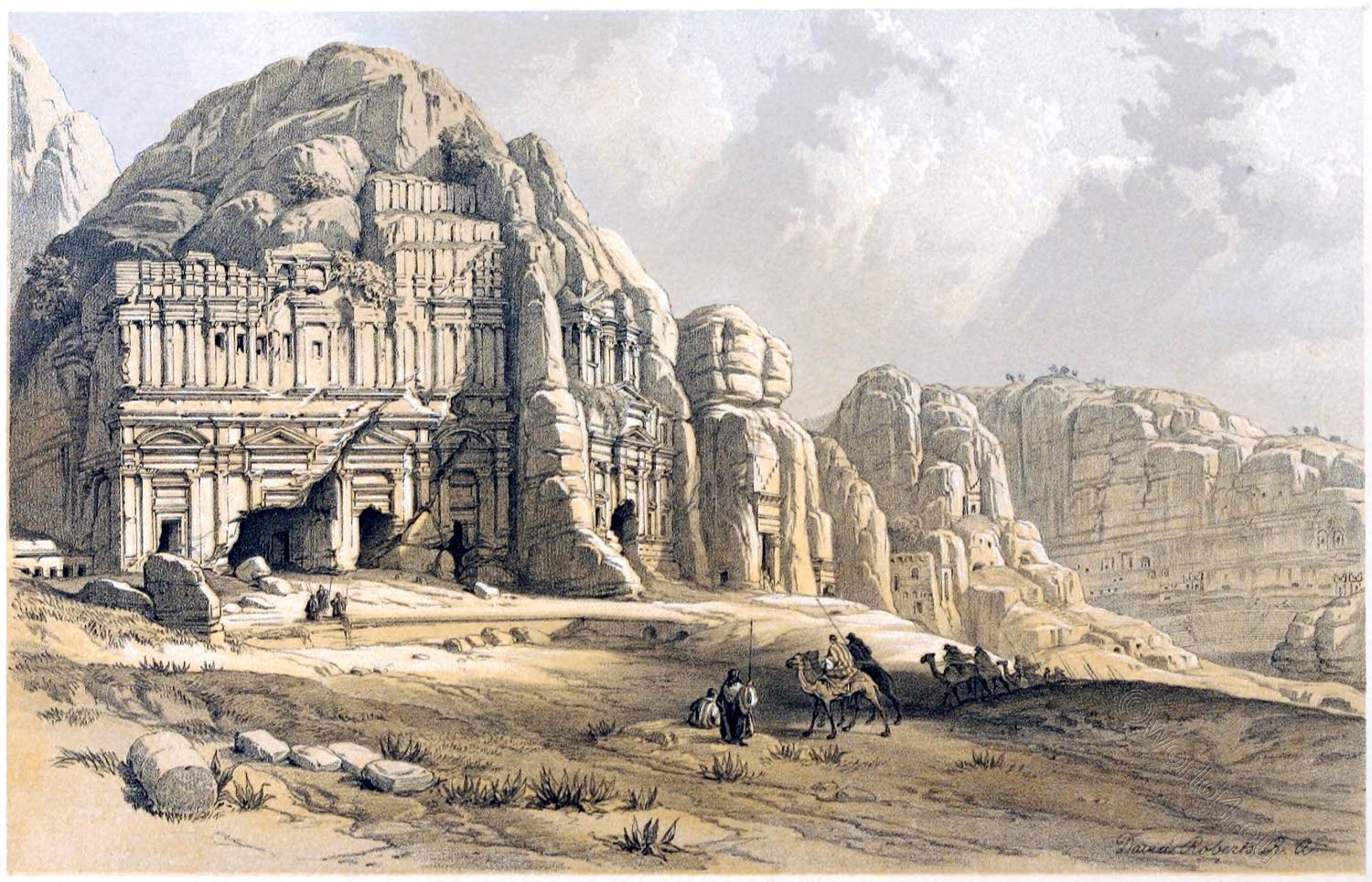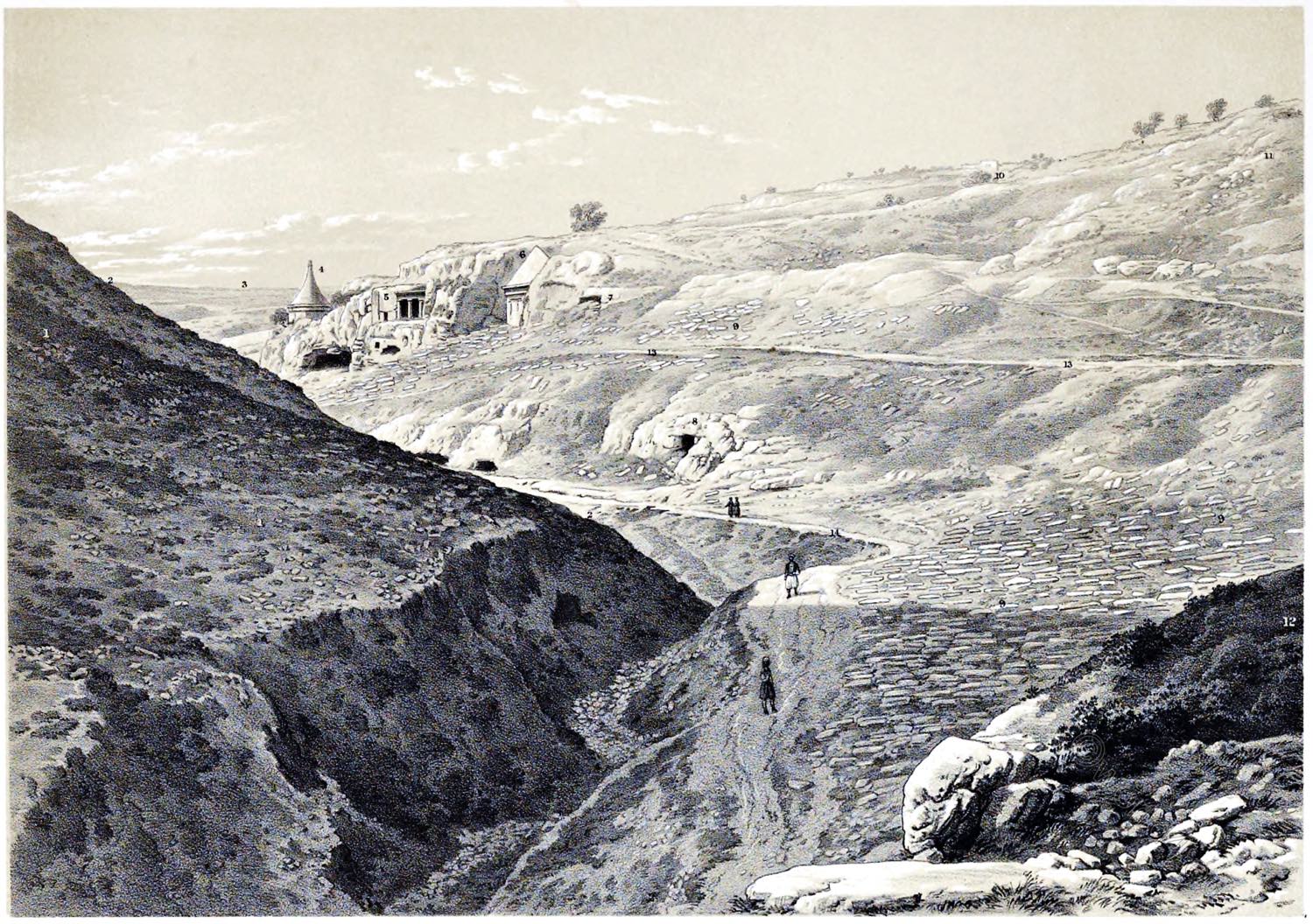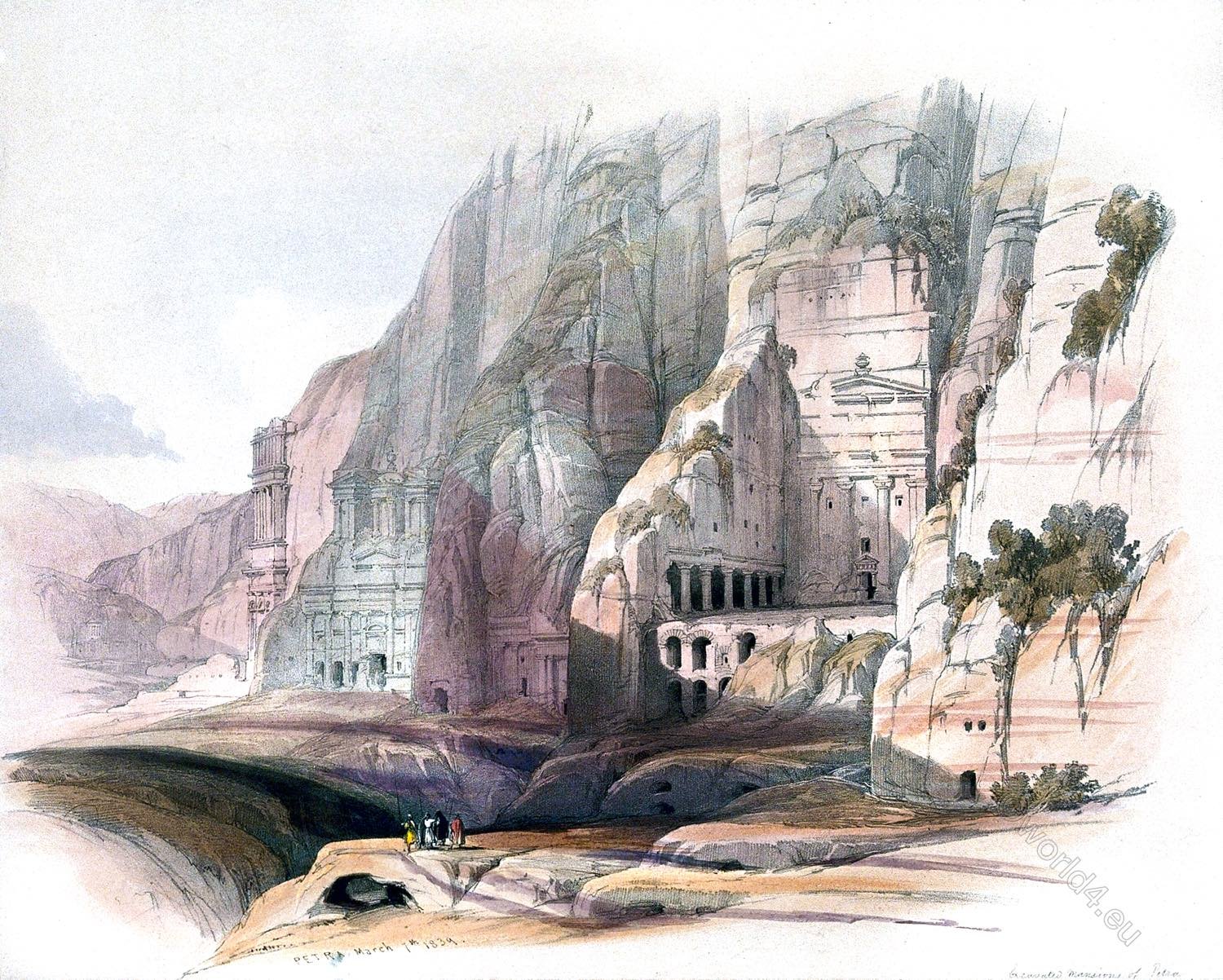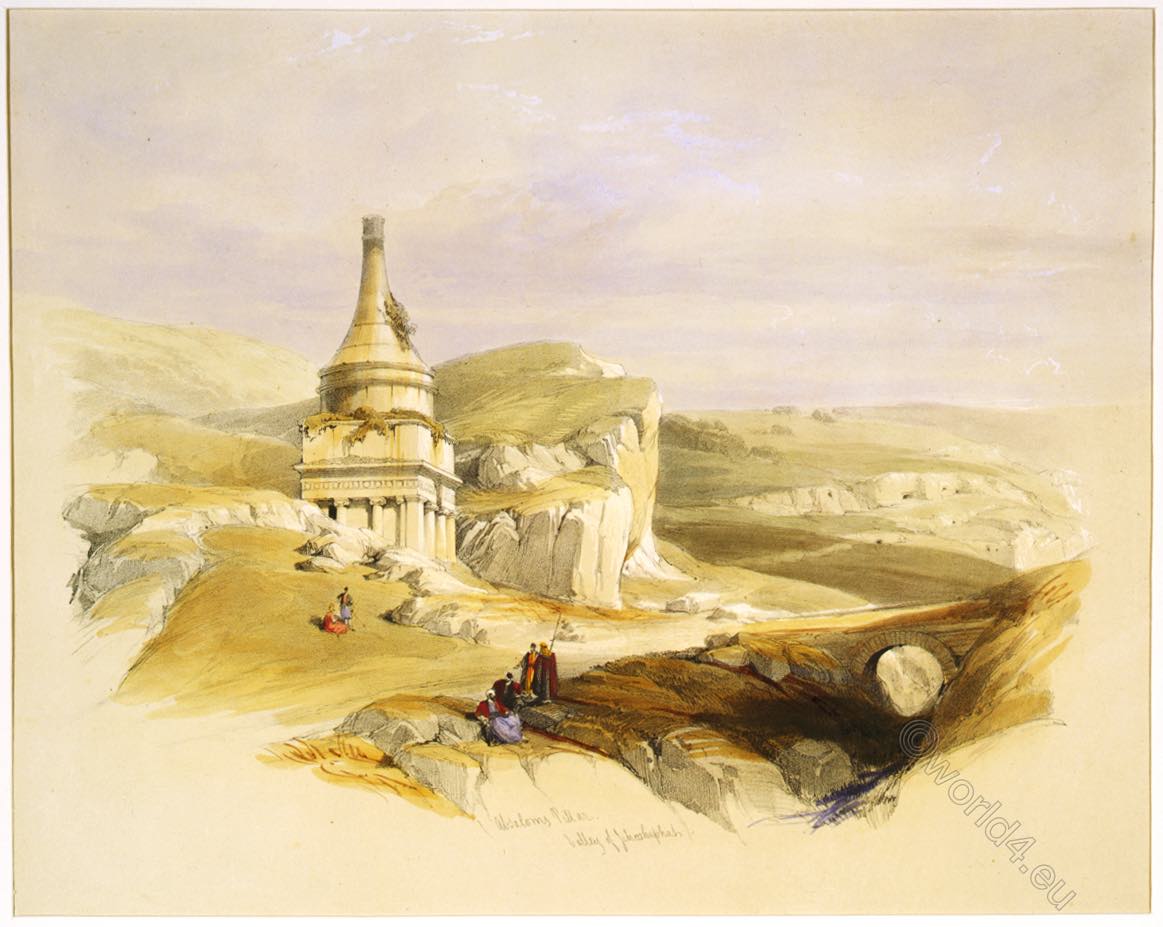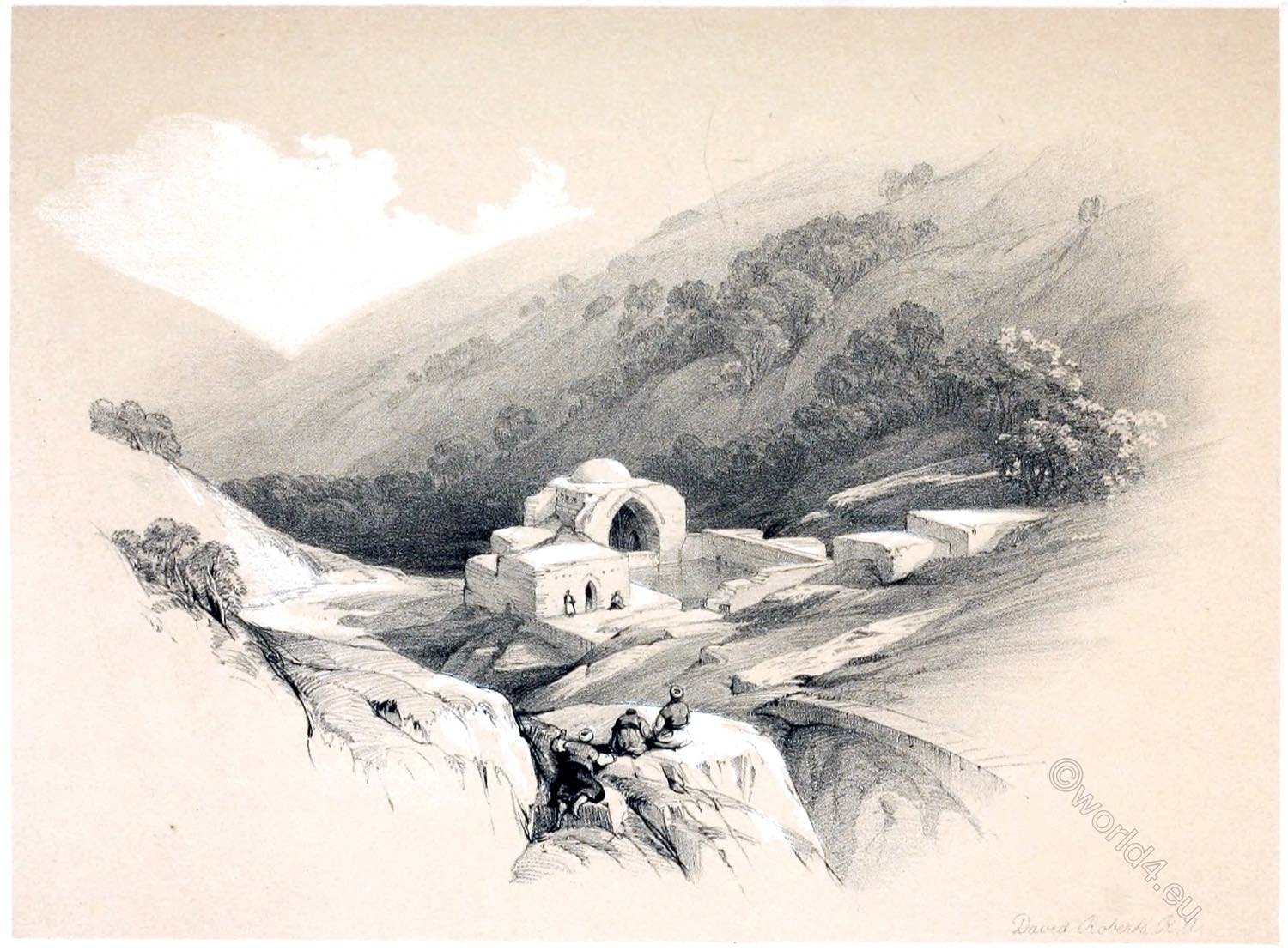
THE FOUNTAIN OF JOB.
by David Roberts
This is an ancient well, situated just below the junction of the Valley of Hinnom with that of Jehoshaphat. Tradition has been busy with its name, and the legend tells us, that this was the especial spot in which the sacred fire of the Temple was preserved during the captivity, until the restoration of the Temple by Nehemiah; the European monks, therefore, call it the Well of Nehemiah. The natives name it Byr Eyub, the Well of Job; but until the sixteenth century it was called En-Rogel.1
It is a very deep excavation, of an irregular quadrilateral form, walled up with large square stones, terminating above in an arch on one side, and apparently of great antiquity. There is a small rude building over it, furnished with one or two large reservoirs of stone. The well measures 125 feet in depth, and, in the rainy season, the water rises to the full height and overflows from the summit.
This well has perhaps the most distinct connexion with remote history of any relic of the city of David. It is mentioned in the Book of Joshua,2 in describing the border between the tribes of Judah and Benjamin. And when Adonijah was to be proclaimed king, he made a feast at En-Rogel, or in the phrase of Josephus, “outside the city, at the fount which is in the king’s garden.”3 It is not mentioned by the historians of the crusades; it
was then probably filled up.4
1) Cotovieus, in 1598, calls it Puteus Ignis. 2) Josh. xv. 7, 8; xviii. 16, 17. 3) 1 Kings, i. 9. Joseph. Antiq. vii. 14. 4. 4) Biblical Researches, v. i. 492.
Source: The Holy Land, Syria, Idumea, Arabia, Egypt, & Nubia, by David Roberts, George Croly, William Brockedon. London: Lithographed, printed and published by Day & Son, lithographers to the Queen. Cate Street, Lincoln’s Inn Fields, 1855.
Continuing
Discover more from World4 Costume Culture History
Subscribe to get the latest posts sent to your email.


